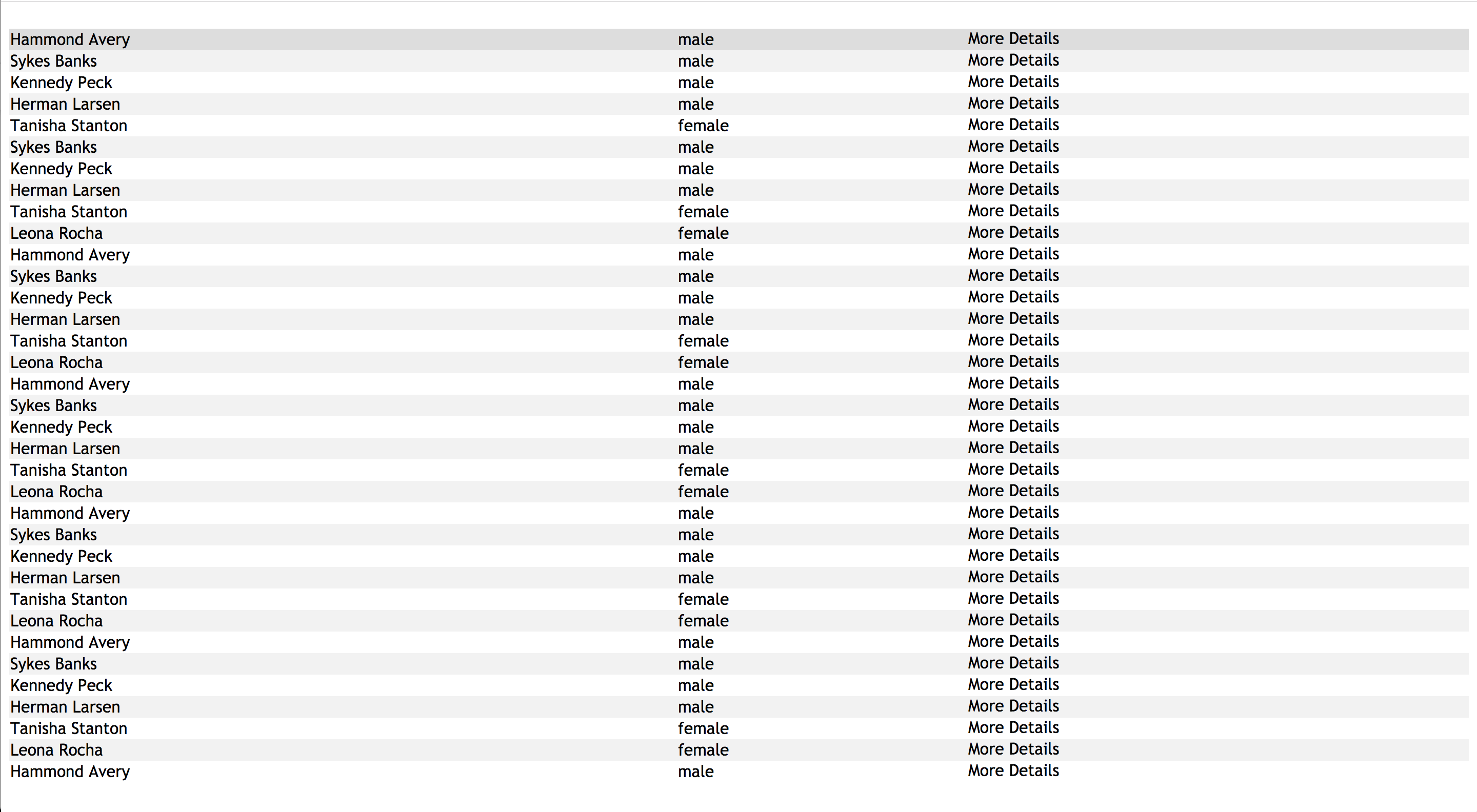Anyone who has profiled long list views will know how slow they can get irrespective of the framework used.
Tools like vertical-collection help in improving the initial and re-render performance by rendering only the scene and not the universe.
Even with tools like these, there might be significant performance penalties due to what is being displayed in the scene itself. Consider this very simple list with about 35 rows. There are columns for the person's name, gender and a More Details dropdown.
{{#each model as |row|}}
{{#student-list}}
<td>{{row.name}}</td>
<td>{{row.gender}}</td>
{{#basic-dropdown as |dropdown|}}
{{#dropdown.trigger}}More Details{{/dropdown.trigger}}
{{#dropdown.content}}
<ul>
<li>Phone: {{row.phone}}</li>
<li>Company: {{row.company}}</li>
<li>Balance: {{row.balance}}</li>
{{#if row.isActive}}
<li>Send Greeting</li>
{{/if}}
</ul>
{{/dropdown.content}}
{{/basic-dropdown}}
{{/student-list}}
{{/each}}
Note that vertical-collection will still render all of these rows because they are all in my viewport.
It displays something as simple as this.
Let us profile this and see.
I use a high-end Macbook Pro, so let's throttle the CPU by 4x to replicate what most people will be seeing.
There. ~240ms to display a simple list. I had this whole thing wrapped in a canShow block with a button to toggle it and could clearly notice the lag between when I clicked the button and when the table showed up.
240ms might not seem like much to some but when that dropdown's contents are based on some computed properties, this could very well spike to significantly higher numbers.
How do we solve this?
Remember render only the scene and not the universe? If you have noticed properly, the dropdowns' contents are rendered even if they might not get toggled at all by the users. Luckily, the basic-dropdown addon exposes an isOpen property that we can make use of. Even if you do not use this addon, it is trivial to determine if a dropdown is open or not. Let's try and make use of this property to see if there are any improvements in the initial rendering performance.
{{#each model as |row|}}
{{#student-list}}
<td>{{row.name}}</td>
<td>{{row.gender}}</td>
{{#basic-dropdown as |dropdown|}}
{{#dropdown.trigger}}More Details{{/dropdown.trigger}}
{{#if dropdown.isOpen}}
{{#dropdown.content}}
<ul>
<li>Phone: {{row.phone}}</li>
<li>Company: {{row.company}}</li>
<li>Balance: {{row.balance}}</li>
{{#if row.isActive}}
<li>Send Greeting</li>
{{/if}}
</ul>
{{/dropdown.content}}
{{/if}}
{{/basic-dropdown}}
{{/student-list}}
{{/each}}
99ms. This is still bad but at least a major improvement from what we had before.
We were able to significantly improve our initial and re-render performance in some of our routes by this technique. Do try this out in your apps if you follow a similar pattern in your templates.


